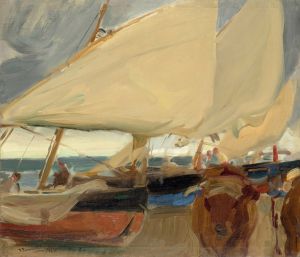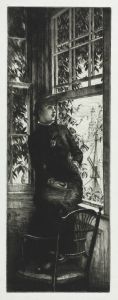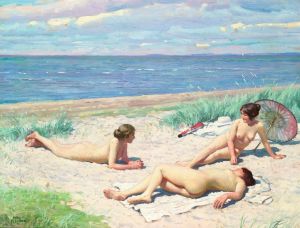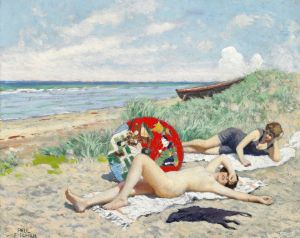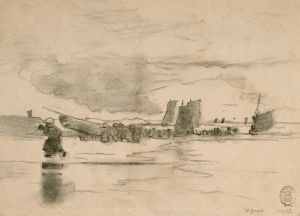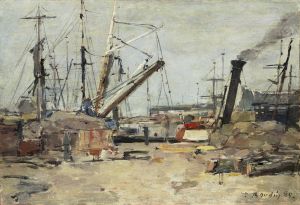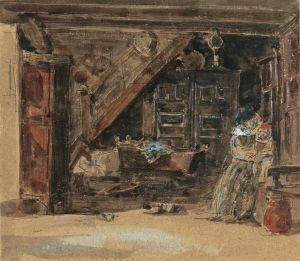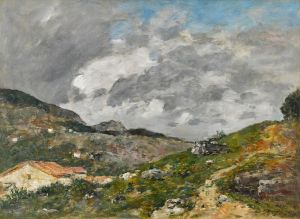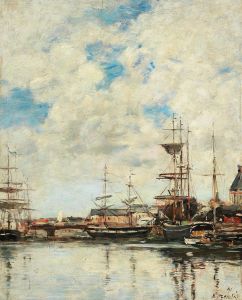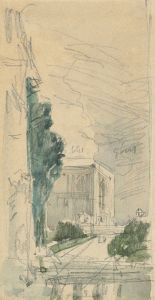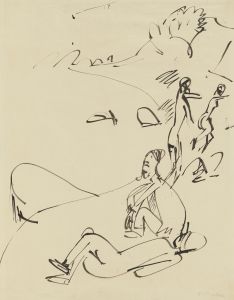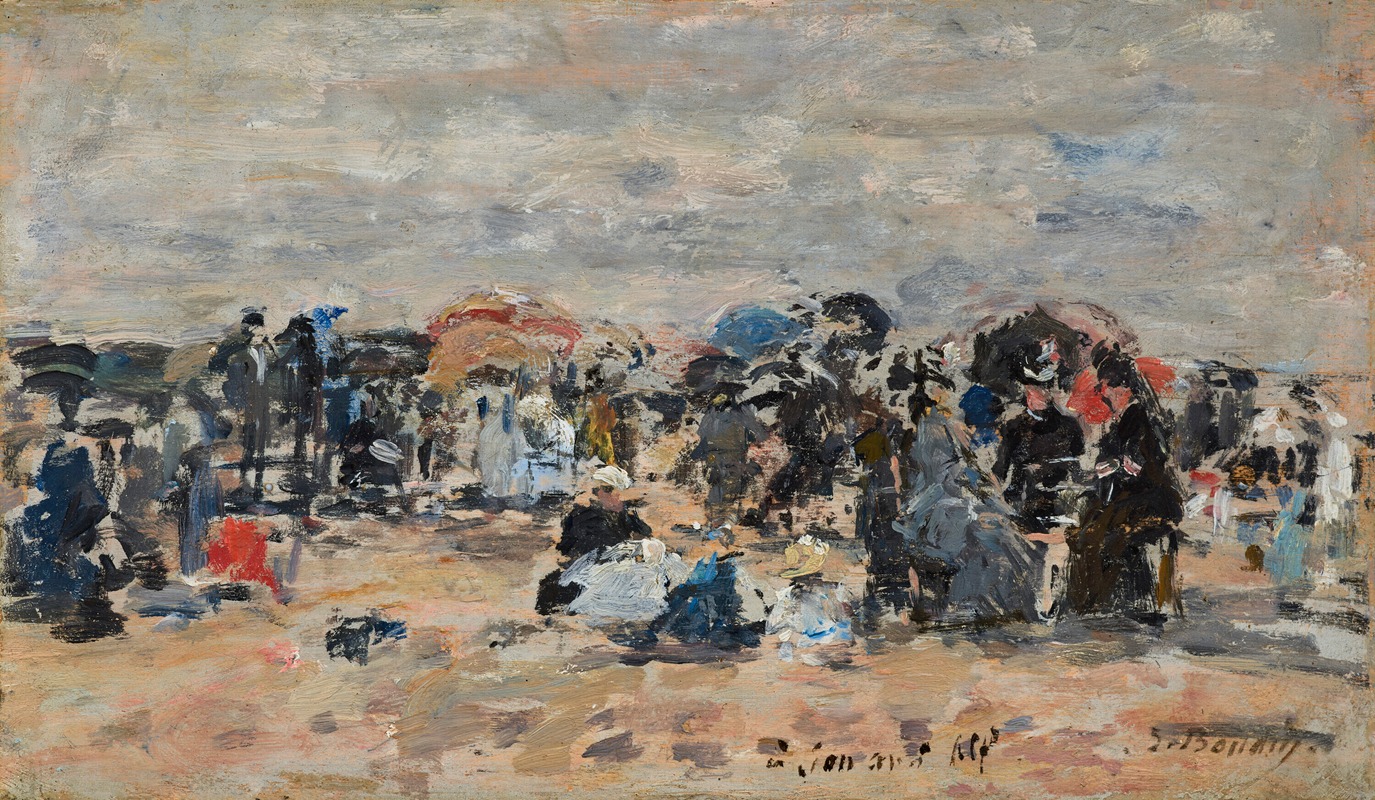
Trouville, Scène de plage
A hand-painted replica of Eugène Boudin’s masterpiece Trouville, Scène de plage, meticulously crafted by professional artists to capture the true essence of the original. Each piece is created with museum-quality canvas and rare mineral pigments, carefully painted by experienced artists with delicate brushstrokes and rich, layered colors to perfectly recreate the texture of the original artwork. Unlike machine-printed reproductions, this hand-painted version brings the painting to life, infused with the artist’s emotions and skill in every stroke. Whether for personal collection or home decoration, it instantly elevates the artistic atmosphere of any space.
Trouville, Scène de plage (Trouville, Beach Scene) is a painting by the French artist Eugène Boudin, a prominent figure in 19th-century French art and a precursor to the Impressionist movement. The painting depicts a lively beach scene in Trouville-sur-Mer, a coastal town in Normandy, France, which was a popular destination for tourists and artists during the 19th century. Boudin is well-known for his depictions of seaside life, and this work is a testament to his skill in capturing the atmosphere and light of the Normandy coast.
Eugène Boudin (1824–1898) was one of the first French landscape painters to work extensively en plein air (outdoors), a practice that greatly influenced the Impressionists. His ability to portray the interplay of light, water, and sky earned him the admiration of his contemporaries, including Claude Monet, who considered Boudin a mentor. Trouville, Scène de plage is one of many works by Boudin that focus on the fashionable beachgoers of Trouville, a subject he frequently explored during the 1860s and 1870s.
The painting features elegantly dressed men and women enjoying leisure time on the beach, a reflection of the growing popularity of seaside resorts among the French bourgeoisie during the Second Empire (1852–1870). Boudin's attention to detail in the figures' clothing and posture, combined with his loose, fluid brushstrokes in the depiction of the sky and sea, creates a harmonious balance between realism and impressionistic technique. The composition often highlights the vastness of the sky, a characteristic element of Boudin's work, emphasizing the natural beauty of the coastal environment.
Trouville, Scène de plage exemplifies Boudin's mastery of capturing transient effects of light and atmosphere. The soft, diffused light in the painting conveys a sense of calm and leisure, while the subtle variations in color reflect the changing weather conditions typical of the Normandy coast. Boudin's ability to render these ephemeral qualities made him a pioneer in the study of light and atmosphere, paving the way for the Impressionist movement.
The exact date of creation for Trouville, Scène de plage is not always specified, but it is generally attributed to the period when Boudin was most active in painting beach scenes, likely the 1860s or 1870s. The painting is part of a broader body of work that includes numerous depictions of Trouville and nearby Deauville, showcasing Boudin's fascination with the interaction between people and their natural surroundings.
Today, works by Eugène Boudin, including his beach scenes, are held in major art collections around the world. His contributions to the development of modern art are widely recognized, and his paintings continue to be celebrated for their innovative approach to landscape and light.





